
The content of this article is about the springboot project creation tutorial (IntelliJIDEA, springboot 2.0 mybatis). It has certain reference value. Friends in need can refer to it. I hope it will be helpful to you.
Environment:
JDK8 windows10
StepsNew Module —>Spring Initializr—>next
1

2.
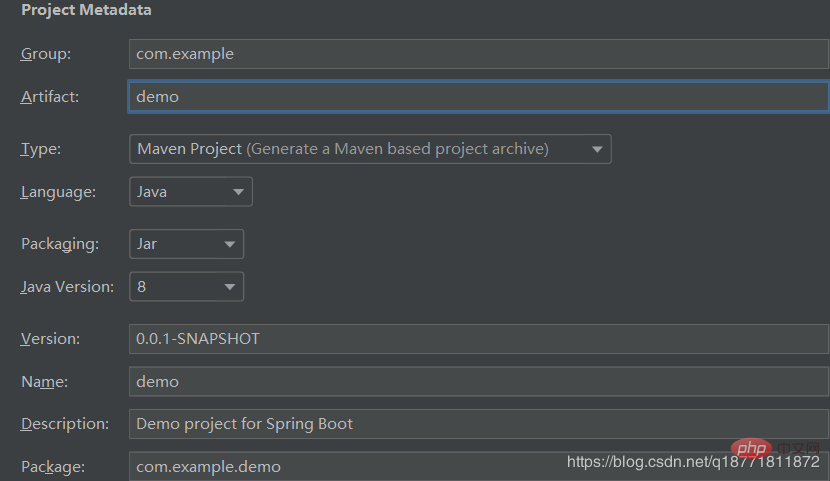
3. Check web for web. You can uncheck sql and add it later. In addition, If MyBatis is checked, an error will be reported such as Property 'sqlSessionFactory' or 'sqlSessionTemplate' are required. I checked it here to solve this error later
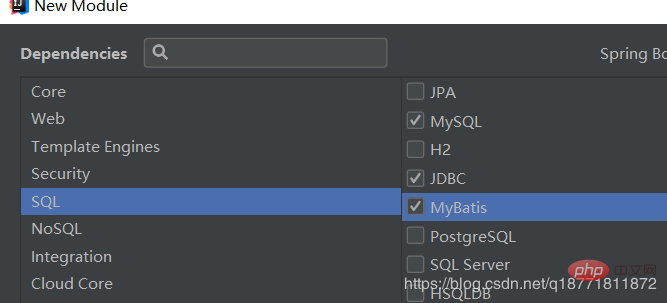
After selecting, just go to the next step and go to the end
The automatically generated pom file is as follows
<?xml version="1.0" encoding="UTF-8"?>
<project xmlns="http://maven.apache.org/POM/4.0.0" xmlns:xsi="http://www.w3.org/2001/XMLSchema-instance"
xsi:schemaLocation="http://maven.apache.org/POM/4.0.0 http://maven.apache.org/xsd/maven-4.0.0.xsd">
<modelVersion>4.0.0</modelVersion>
<parent>
<groupId>org.springframework.boot</groupId>
<artifactId>spring-boot-starter-parent</artifactId>
<version>2.0.8.RELEASE</version>
<relativePath/> <!-- lookup parent from repository -->
</parent>
<groupId>com.example</groupId>
<artifactId>demo</artifactId>
<version>0.0.1-SNAPSHOT</version>
<name>demo</name>
<description>Demo project for Spring Boot</description>
<properties>
<java.version>1.8</java.version>
</properties>
<dependencies>
<dependency>
<groupId>org.springframework.boot</groupId>
<artifactId>spring-boot-starter-jdbc</artifactId>
</dependency>
<dependency>
<groupId>org.springframework.boot</groupId>
<artifactId>spring-boot-starter-web</artifactId>
</dependency>
<dependency>
<groupId>org.mybatis.spring.boot</groupId>
<artifactId>mybatis-spring-boot-starter</artifactId>
<version>2.0.0</version>
</dependency>
<dependency>
<groupId>mysql</groupId>
<artifactId>mysql-connector-java</artifactId>
<scope>runtime</scope>
</dependency>
<dependency>
<groupId>org.springframework.boot</groupId>
<artifactId>spring-boot-starter-test</artifactId>
<scope>test</scope>
</dependency>
</dependencies>
<build>
<plugins>
<plugin>
<groupId>org.springframework.boot</groupId>
<artifactId>spring-boot-maven-plugin</artifactId>
</plugin>
</plugins>
</build>
</project>## Directory structure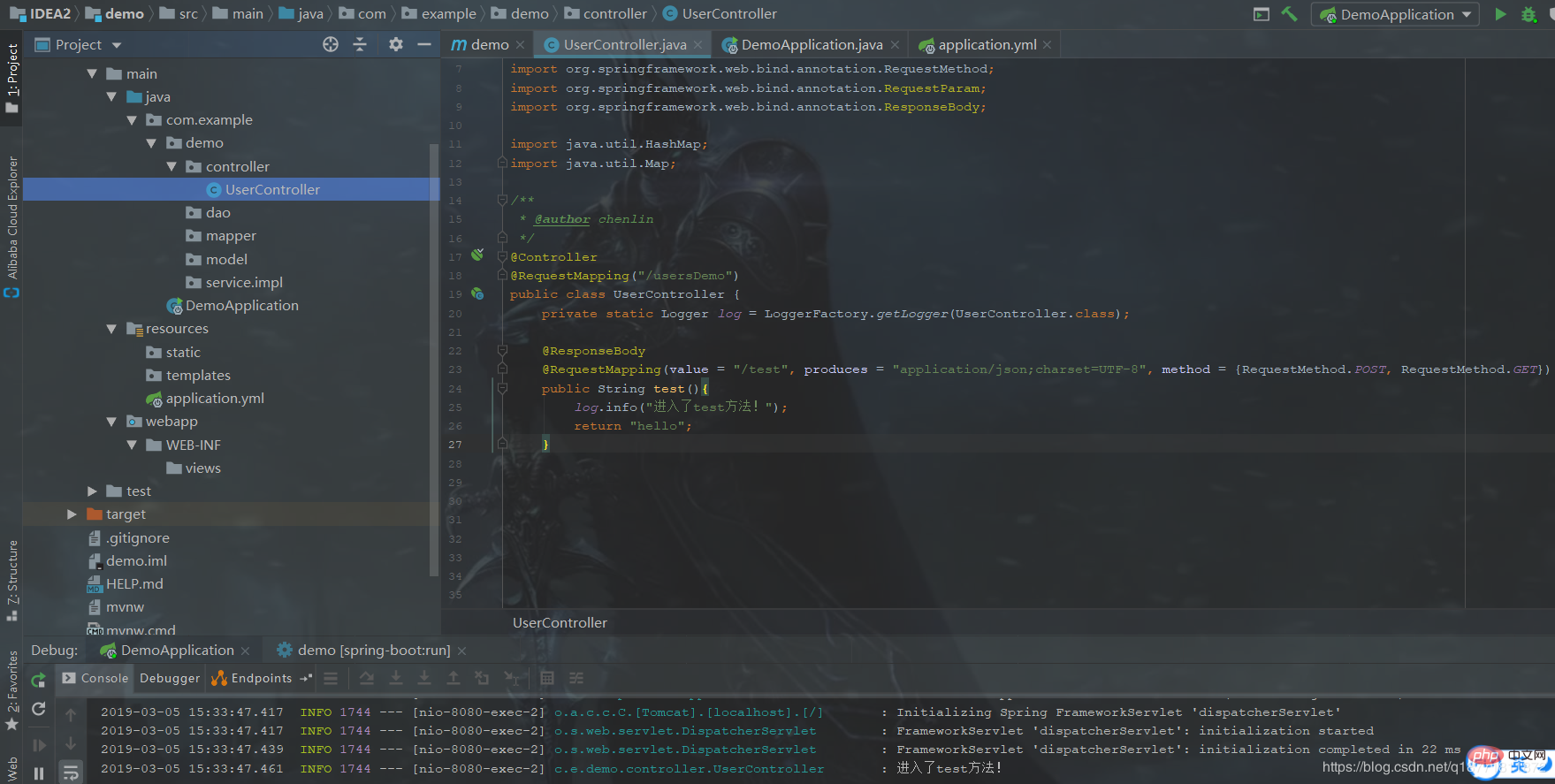
Because there is no configuration database and any files, the application is empty, and the default port is 8080
We need to ignore the database configuration at startup
@SpringBootApplication(exclude = {DataSourceAutoConfiguration.class})
Then use postman to access it, indicating that the project is normal
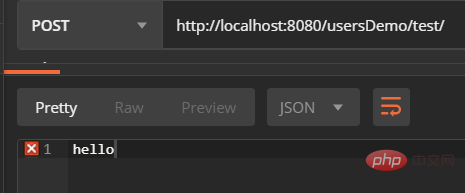
4. Configure the database application.yml file
server:
port: 8080
tomcat:
uri-encoding: UTF-8
servlet:
context-path: /
spring:
dataSource:
url: jdbc:mysql://localhost:3306/db-test?useUnicode=true&characterEncoding=utf8&tinyInt1isBit=false
username: root
password: 123456
driverClassName: com.mysql.jdbc.Driver
mybatis:
mapper-locations: classpath:com/example/demo/mapper/*Mapper.xml #注意:一定要对应mapper映射xml文件的所在路径
type-aliases-package: com.example.demo.model # 注意:对应实体类的路径
configuration:
call-setters-on-nulls: true # 解决使用map类型接收查询结果的时候为null的字段会没有的情况这时候 com.mysql.jdbc.Driver 标红 说明mysql架包找不到

Remove
<dependency>
<groupId>mysql</groupId>
<artifactId>mysql-connector-java</artifactId>
<scope>runtime</scope>
</dependency>Just change it to the default version
<dependency>
<groupId>mysql</groupId>
<artifactId>mysql-connector-java</artifactId>
</dependency>Then driverClassName returns to normal
导入 service dao xml (这里没有使用实体类返回,使用的是map返回,所以表我们可以随意自建) UserController
@Controller
@RequestMapping("/usersDemo")
public class UserController {
private static Logger log = LoggerFactory.getLogger(UserController.class);
@Resource
UserService userService;
@ResponseBody
@RequestMapping(value = "/test", produces = "application/json;charset=UTF-8", method = {RequestMethod.POST, RequestMethod.GET})
public List<Map<String, Object>> test(){
log.info("进入了test方法!");
List<Map<String,Object>> list=userService.userQueryAll();
return list;
}
}UserService
public interface UserService {
List<Map<String, Object>> userQueryAll();
}UserserviceImpl
@Service
public class UserserviceImpl implements UserService {
@Resource
UserMapper userDao;
@Override
public List<Map<String, Object>> userQueryAll() {
return userDao.userQueryAll();
}
}UserMapper
@Mapper
public interface UserMapper {
List<Map<String, Object>> userQueryAll();
}UserMapper.xml
<?xml version="1.0" encoding="UTF-8" ?>
<!DOCTYPE mapper PUBLIC "-//mybatis.org//DTD Mapper 3.0//EN" "http://mybatis.org/dtd/mybatis-3-mapper.dtd" >
<mapper namespace="com.example.demo.dao.UserMapper">
<select id="userQueryAll" parameterType="Map" resultType="Map">
SELECT * FROM `users`
</select>
</mapper>DemoApplication
@SpringBootApplication(exclude = {DataSourceAutoConfiguration.class})
@MapperScan("com.example.demo.dao")
@ComponentScan(basePackages = {"com.example.demo.*"})
public class DemoApplication {
public static void main(String[] args) {
SpringApplication.run(DemoApplication.class, args);
}
}Okay,
The next step is to start
5Start
Note: If exclude = {DataSourceAutoConfiguration.class}
## is not removed after dependency injection #The following error will be reported at startup: Caused by: java.lang.IllegalArgumentException: Property 'sqlSessionFactory' or 'sqlSessionTemplate' are requiredError reason 1:很多人说 创建项目的时候勾选了mybatis导致
实际上是这个架包的原因
如果不要的话也不能使用mybatis了
<dependency>
<groupId>org.mybatis.spring.boot</groupId>
<artifactId>mybatis-spring-boot-starter</artifactId>
<version>2.0.0</version>
</dependency>dataSource.type 使用默认的连接池导致的
<dependency>
<groupId>com.alibaba</groupId>
<artifactId>druid-spring-boot-starter</artifactId>
<version>1.1.13</version>
</dependency>
Possible cause of error 1
. The id of select in mapper.xml is written incorrectlySolution: Check the code
Possible cause of error 2
. The program is not compiled xml fileSolution: Add code to the pom.xml file build
<resources>
<resource>
<directory>src/main/java</directory>
<includes>
<include>**/*.xml</include>
</includes>
<filtering>false</filtering>
</resource>
</resources>The final pom.xml file is as follows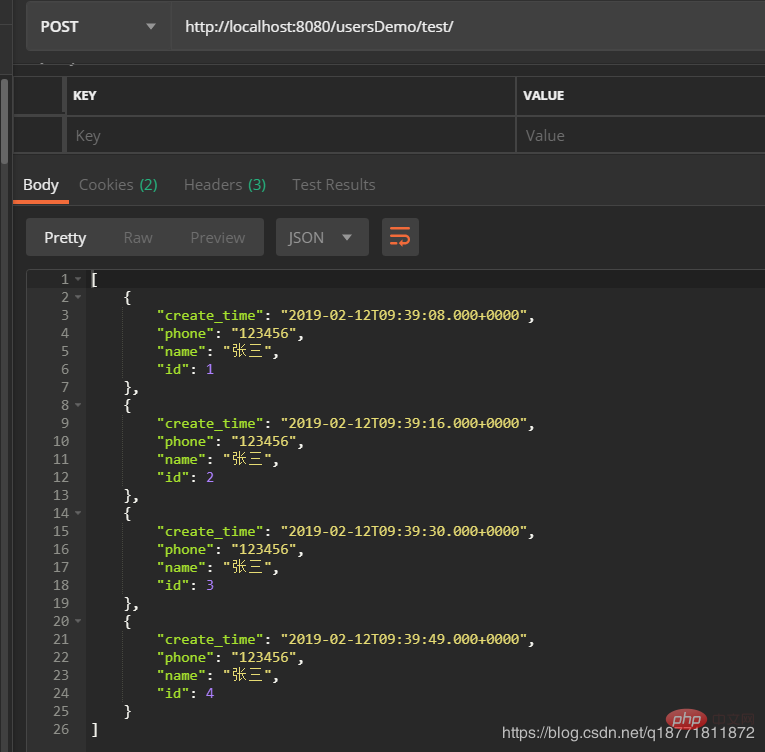
<?xml version="1.0" encoding="UTF-8"?>
<project xmlns="http://maven.apache.org/POM/4.0.0" xmlns:xsi="http://www.w3.org/2001/XMLSchema-instance"
xsi:schemaLocation="http://maven.apache.org/POM/4.0.0 http://maven.apache.org/xsd/maven-4.0.0.xsd">
<modelVersion>4.0.0</modelVersion>
<parent>
<groupId>org.springframework.boot</groupId>
<artifactId>spring-boot-starter-parent</artifactId>
<version>2.0.8.RELEASE</version>
<relativePath/> <!-- lookup parent from repository -->
</parent>
<groupId>com.example</groupId>
<artifactId>demo</artifactId>
<version>0.0.1-SNAPSHOT</version>
<name>demo</name>
<description>Demo project for Spring Boot</description>
<properties>
<java.version>1.8</java.version>
</properties>
<dependencies>
<dependency>
<groupId>org.springframework.boot</groupId>
<artifactId>spring-boot-starter-jdbc</artifactId>
</dependency>
<dependency>
<groupId>org.springframework.boot</groupId>
<artifactId>spring-boot-starter-web</artifactId>
</dependency>
<dependency>
<groupId>org.mybatis.spring.boot</groupId>
<artifactId>mybatis-spring-boot-starter</artifactId>
<version>2.0.0</version>
</dependency>
<!-- alibaba的druid数据库连接池监控依赖 -->
<dependency>
<groupId>com.alibaba</groupId>
<artifactId>druid-spring-boot-starter</artifactId>
<version>1.1.13</version>
</dependency>
<dependency>
<groupId>mysql</groupId>
<artifactId>mysql-connector-java</artifactId>
<version>${mysql.version}</version>
</dependency>
<dependency>
<groupId>org.springframework.boot</groupId>
<artifactId>spring-boot-starter-test</artifactId>
<scope>test</scope>
</dependency>
</dependencies>
<build>
<plugins>
<plugin>
<groupId>org.springframework.boot</groupId>
<artifactId>spring-boot-maven-plugin</artifactId>
</plugin>
</plugins>
<resources>
<resource>
<directory>src/main/java</directory>
<includes>
<include>**/*.xml</include>
</includes>
<filtering>false</filtering>
</resource>
</resources>
</build>
</project>The above is the detailed content of Springboot project creation tutorial (IntelliJIDEA, springboot 2.0 +mybatis). For more information, please follow other related articles on the PHP Chinese website!